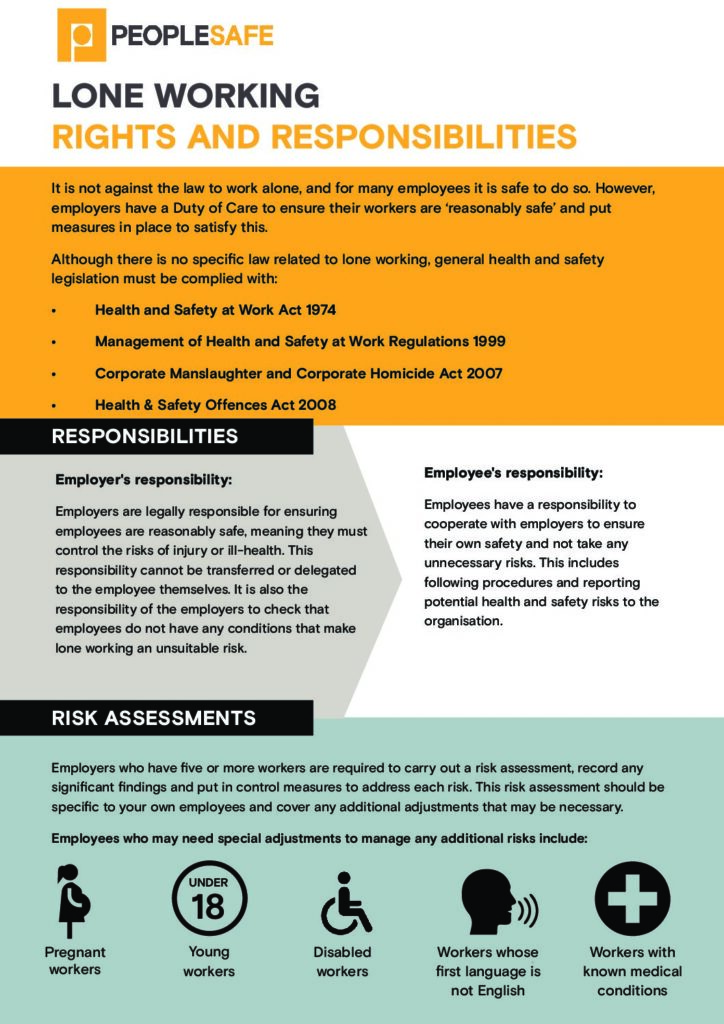Lone Working Rights and Responsibilities
It is not against the law to work alone, and for many employees it is safe to do so. However, employers have a Duty of Care to ensure their workers are ‘reasonably safe’ and put measures in place to satisfy this.
Although there is no specific law related to lone working, general health and safety legislation must be complied with:
- Health and Safety at Work Act 1974
- Management of Health and Safety at Work Regulations 1999
- Corporate Manslaughter and Corporate Homicide Act 2007
- Health & Safety Offences Act 2008
Responsibilities
Employer’s responsibility:
Employers are legally responsible for ensuring employees are reasonably safe, meaning they must control the risks of injury or ill-health. This responsibility cannot be transferred or delegated to the employee themselves. It is also the responsibility of the employers to check that employees do not have any conditions that make lone working an unsuitable risk.
Employee’s responsibility:
Employees have a responsibility to cooperate with employers to ensure their own safety and not take any unnecessary risks. This includes
following procedures and reporting potential health and safety risks to the organisation.
Risk assessments
Employers who have five or more workers are required to carry out a risk assessment, record any significant findings and put in control measures to address each risk. This risk assessment should be specific to your own employees and cover any additional adjustments that may be necessary. Employees who may need special adjustments to manage any additional risks include:
- Pregnant workers
- Young workers
- Disabled workers
- Workers whose first language is not English
- Workers with known medical conditions
Supervision
The amount of supervision required will be determined by the level of risk and the ability of the lone worker to identify and handle health and safety issues. Some ways you could supervise employees are:
- Periodic site visits
- Check-in texts
- Scheduled phone calls
- Regular team meetings (e.g. daily or weekly)
Whatever methods are used, the only requirement is that the procedure ensures the safety of the employee.
Training
Lone workers should be taught safe lone working practices and be aware of any procedures to ensure their safety while working alone. Basic training should include conflict resolution, de-escalation techniques, how to conduct a dynamic risk assessment and what to do in an emergency.
The right to a safe working environment
Companies must take measures to protect the welfare of all employees, including lone workers. Organisations may want to consider:
- Providing communication devices
- A lone worker service
- GPS tracking
- Having an emergency contact or central number to respond to incidents
When is lone working not ok?
Certain high-risk situations are not appropriate for lone workers to complete. For example, the transportation of explosives is never assigned to just one person because it is too dangerous. If an employee feels unsafe completing a task by themselves, they cannot be
punished for not doing their job.
If you have any concerns about your health and safety, you should always raise these with your line manager or HR department.

